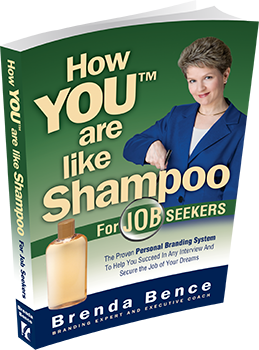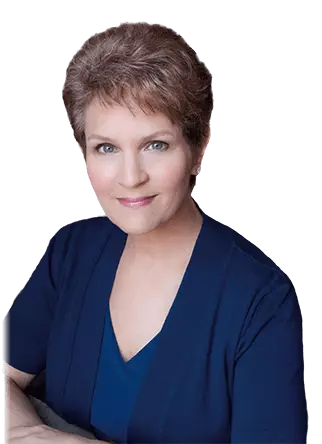You took the time to create a great cover letter and resume, and they did their job – you got the interview. Now, you’re ready to walk into the door of the company’s building, and it’s the moment of truth. You really want this job, but what can you do to give yourself the edge over others vying for the same position?
One of the best ways to ace an interview is to define and communicate a “job-seeker personal brand” – the way you want potential employers to perceive, think, and feel about you as compared to other candidates. Personal branding helps you focus your efforts in job interviews, allowing you more quickly to show the interviewer why you’re the best person for the job. It helps you to influence the perception of the interviewer, making a quick connection and building a relationship that gives you a much better chance of hearing the magic words – “You’re hired!” Here are some tips for using personal branding to ace your job interviews and get the job you want:
- Make an Impression From Start to Finish. Everyone wants to work with nice people, so be polite to each and every person you encounter at your potential employer, no matter who they are. This means the parking attendant, the doorman, the receptionist, the secretary – everyone. Even if someone is rude to you, don’t lose your cool; this person may have a direct link to your interviewer or potential boss. On the flip side, if you’re courteous, your interviewer may hear great things about you that communicate a strong personal brand… and that’s the kind of person your employer wants to have around.
- Show Your Teeth. Besides remaining courteous and polite, don’t be afraid to smile! Facial-expression expert Paul Ekman, a Professor Emeritus of Psychology at the University of California-San Francisco, says that a smile can be seen from 30 meters away and communicates “benign intentions.” In other words, it puts people at ease – including your interviewer. It also communicates a personal brand that is self-assured and friendly.
- It’s All in Your Hands. Find a friend who will be honest with you, and practice your handshake before interviews to make sure your grip isn’t too strong or too limp. Grasp the other person’s hand firmly … but not so firmly that it hurts! Your goal is to communicate a personal brand through your grip that is confident but not overpowering. You want to come across as someone who is willing to take charge when necessary but who is also a team player, not a control freak.
- Name Calling. Everyone’s favorite word is their own name. So, while you’re shaking hands, be sure to use the interviewer’s name. Just like you love to hear your name, your interviewer will love to be acknowledged for his or her own personal brand, and you’ll begin to develop that all-important connection right off the bat.
- Speak the Language of Interviewing. We live in an increasingly informal world, but don’t forget that the language in interviews is different from everyday language. Don’t say “yeah” instead of “yes” or “nope” instead of “no.” Don’t forget to say “please” and “thank you” when it’s appropriate. If you haven’t used more formal language in a while, practice speaking in complete sentences and pronouncing words correctly. It helps to communicate the professional personal brand you need for just about any job.
- Too Much or Too Little? Do you have a tendency to go off on tangents when you get nervous, talking too much? If you do, you will communicate a personal brand of nervousness and lack of confidence, or worse – someone, who is self-centered. It will also rob you of the time you need to tell the interviewer about your most important qualifications. Of course, the opposite is also a problem. If you don’t say much, your interviewer won’t learn enough about you to know whether you’re right for the job. Learn to balance between bragging and humility, and prepare enough for the interview that you have plenty to say about your experience and education. Then, you won’t get stuck in silence. Whether you tend to be too quiet or too chatty, remember that an interview is a conversation between two people. Listen attentively to the interviewer when he or she speaks, and feel free to ask a few questions about the company as well.
- Take a Breath. When you’re nervous, you might want to burst out with an answer as soon as you’re asked a question, but this can easily lead to rambling. You may even say something you didn’t mean to say. Interviewers don’t mind at all if you pause for a moment to gather your thoughts before answering a question. It shows that you’re taking your answer seriously, and it also communicates a personal brand of integrity. But what if you don’t know the answer to the question? Don’t fake it! It’s better to ask for some time to think about it or gather some research in order to get back to the interviewer later.
- What’s Your Body Saying? Yes, your body communicates a great deal about your personal brand, and you may be completely unaware of what it’s “saying!” Be careful not to fidget, or you risk communicating a “nervous” brand. This also includes drumming your fingers, chewing on your nails, gripping your chair, or tapping your foot. On the other hand, don’t slump in your chair or lean back. You can come across as someone who doesn’t care about the interview or the job. To communicate an open and friendly personal brand, make appropriate eye contact with the interviewer, avoid folding your arms across your chest, and lean forward slightly to show your interest in what the interviewer is saying. All of these gestures convey someone who is receptive and ready to work.
- Choose Stories From All Walks of Life. When your interviewer asks you for an example of how you handled a difficult situation, what do you do if there are no stories from your work life that fit? Don’t try to make an inappropriate story work if it doesn’t. Instead, search your memory for experiences at home, at school, in volunteer situations, or in other areas that might demonstrate your abilities. Don’t miss the chance, if possible, to show what you can do, even if the experience happened somewhere other than work.
- Write it Down. Don’t hesitate to take a few notes during your interview. It not only communicates a conscientious personal brand – and conscientiousness is something every employer wants – but it also helps you remember the key topics you discussed so that you can refer to them later on. Don’t forget to write down the full names of key people mentioned, as well as their titles; they may be helpful in later interviews.
These are just a few of the ways in which defining a job-seeker personal brand can help you to communicate in interviews exactly who you are and what you can do. When you have a clear picture of what you want to convey and how to do it, you can walk into any interview confident about your ability to perform well and get the job you want.

How YOU™ are like Shampoo: For Job Seekers
Follow Brenda’s step-by-step personal branding process to land the job and the career you’ve always wanted.

 Brenda Bence is sought after across six continents as a Certified Executive Leadership Coach, internationally recognized branding expert, and the author of 11 award-winning books on leadership, coaching, and branding. A Global Certified Speaking Professional, Brenda is in demand as a top-rated motivational speaker, engaging audiences around the world, both in-person and virtually.
Brenda Bence is sought after across six continents as a Certified Executive Leadership Coach, internationally recognized branding expert, and the author of 11 award-winning books on leadership, coaching, and branding. A Global Certified Speaking Professional, Brenda is in demand as a top-rated motivational speaker, engaging audiences around the world, both in-person and virtually.